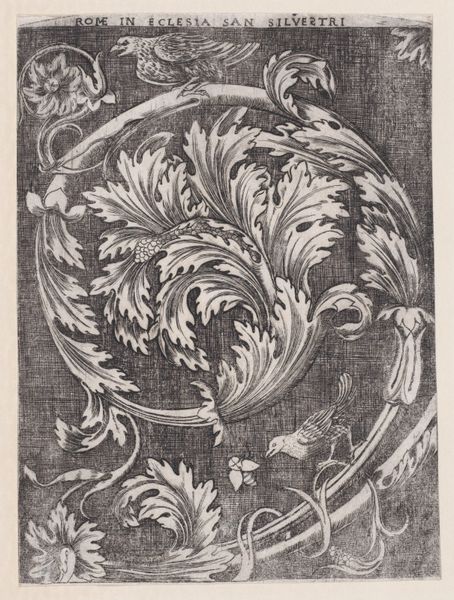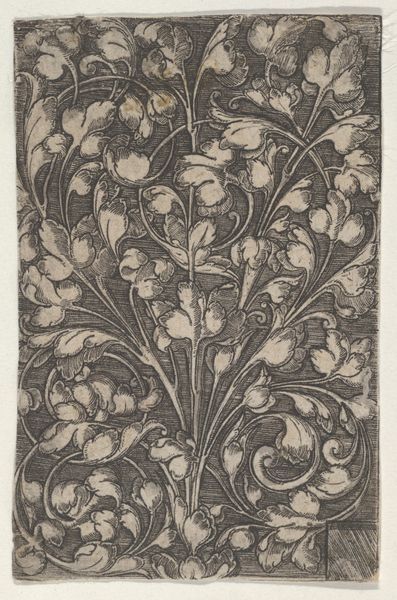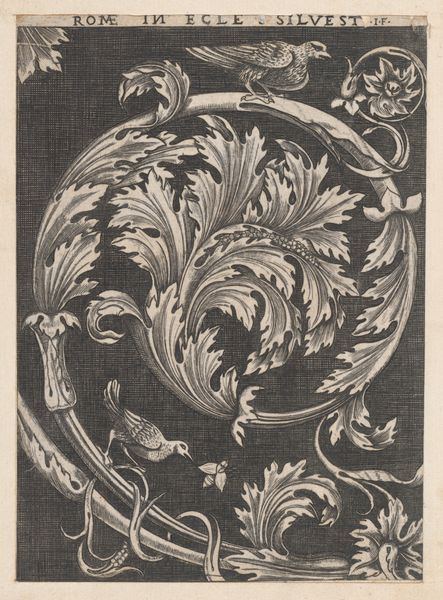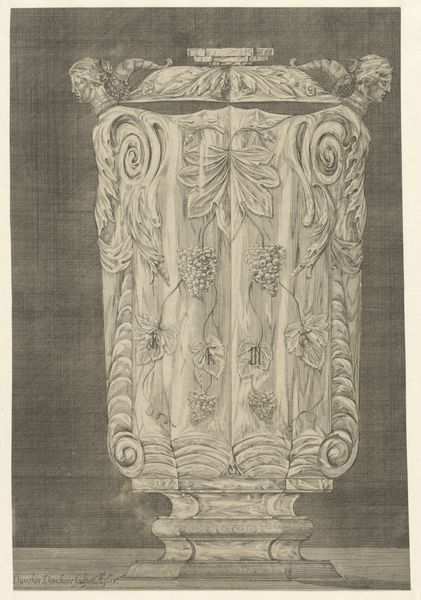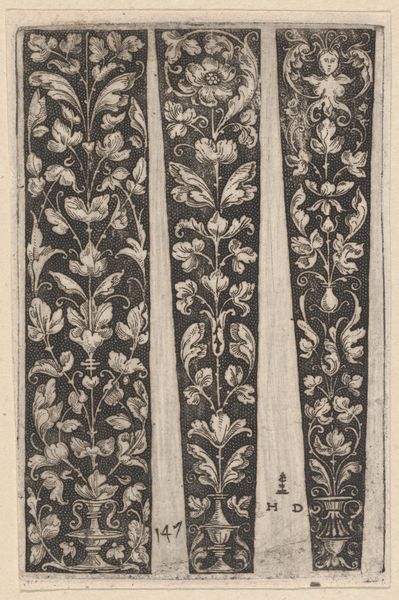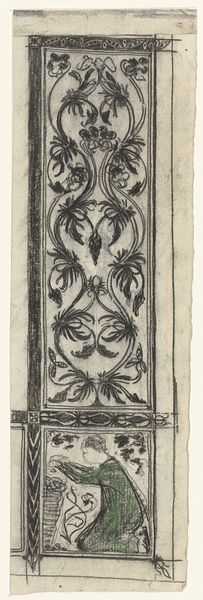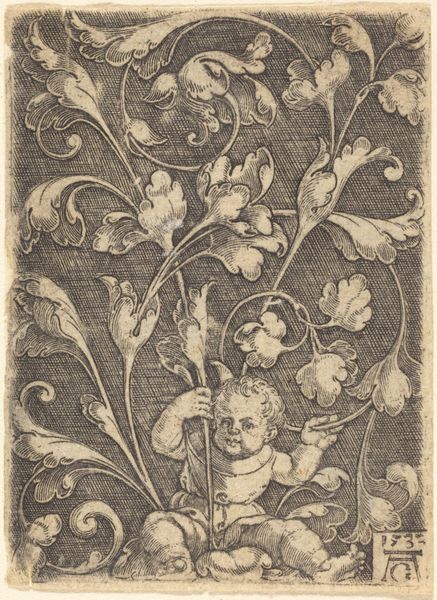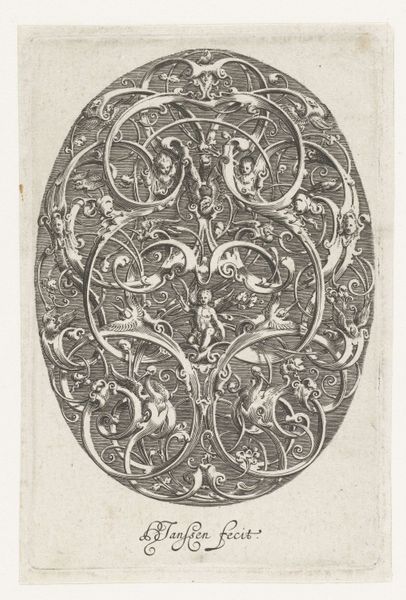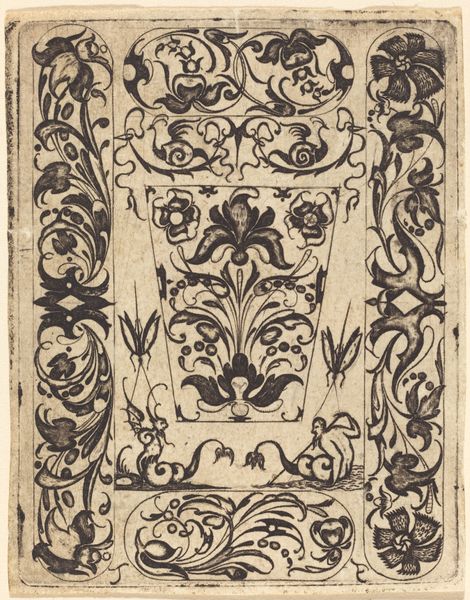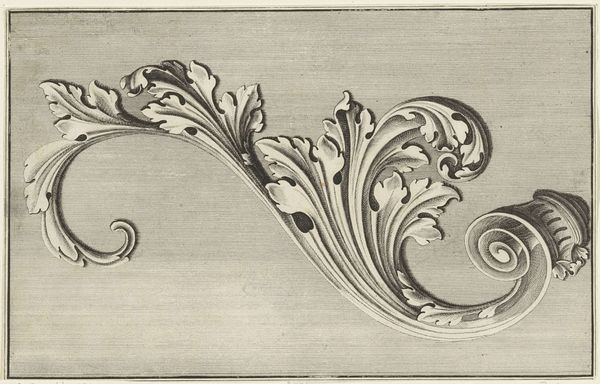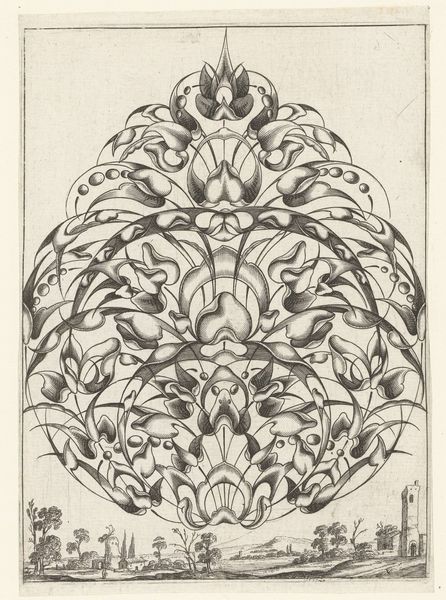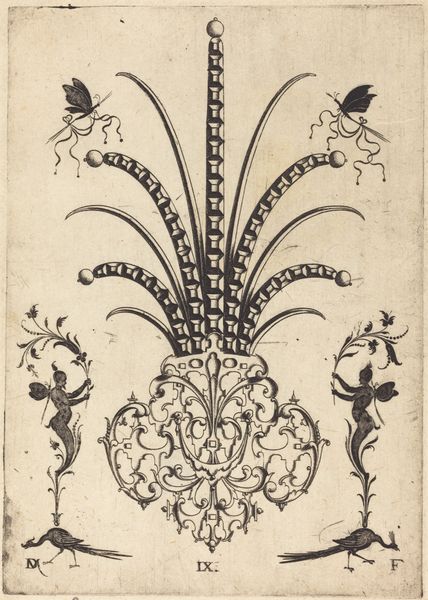
Speculum Romanae Magnificentiae: Capital decorated with Acanthus Leaves from the Curch of Sant' Agnese fuori le mura 1514 - 1536
0:00
0:00
drawing, print, relief, engraving, architecture
#
drawing
# print
#
relief
#
geometric
#
italian-renaissance
#
engraving
#
architecture
Dimensions: sheet: 12 3/8 x 13 3/16 in. (31.5 x 33.5 cm) plate: 9 5/8 x 6 1/2 in. (24.5 x 16.5 cm)
Copyright: Public Domain
Editor: This is an engraving by Agostino Veneziano, dating from between 1514 and 1536, titled "Speculum Romanae Magnificentiae: Capital decorated with Acanthus Leaves from the Church of Sant' Agnese fuori le mura." The intricate detail is remarkable, but what particularly strikes me is the technical skill involved in replicating architecture as a printed image. What do you make of this piece? Curator: This print offers us a glimpse into the labor of reproducing architectural grandeur. Consider the process: the original carving of the capital in stone, the artist’s detailed drawing, and then the translation of that drawing into an engraving on a metal plate. This process shifts the meaning from solely decorative, shifting towards mass reproducibility for distribution of visual knowledge. The "Speculum Romanae Magnificentiae" aimed to document the splendors of Rome, so we might ask: who was meant to consume these images and how might it have impacted society's aesthetic perception? Editor: So, it's not just about the beauty of the capital itself, but also the transformation of that capital through the printing process, making architectural details more accessible? It becomes a form of documentation and almost a democratisation of architectural forms through mass consumption. Curator: Precisely. This work blurs boundaries, shifting high art from exclusive settings into commodities. Also consider that the print itself would have required its own network of laborers; from the engravers like Veneziano to the printers and distributors and eventually, the consumers who would acquire and circulate these images. Editor: I see it now. I was focused on the art object, but you've illuminated how its materiality and means of production create layers of social and economic meaning. Curator: Thinking about artistic labor is the key! It makes us reconsider value systems and highlights art as both aesthetic object and social product. Editor: That's a really important reminder. Thanks for opening my eyes to a broader way of seeing this print. Curator: It’s been enlightening to consider it with you.
Comments
No comments
Be the first to comment and join the conversation on the ultimate creative platform.
